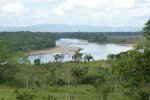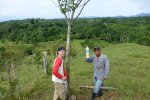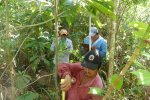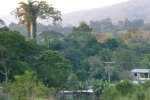
Project
Towards multifunctional landscapes in tropical deforestation frontiers
To determine the social-ecological drivers of forest landscape change (changes in forest quantity, quality and spatial pattern) in human-modified landscapes and the consequences for landscape multifunctionality.
Most of the world’s remaining tropical forests are degraded forests located inside human-modified landscapes (HMLs). HMLs consist of a mosaic of land-uses and are dynamic, especially when recently colonized. Little is known about how HMLs evolve and under what conditions forests can persist and contribute to the maintenance of multiple landscape functions and services. This seriously hampers land-use planning, resulting in a rapid loss of natural habitat, biodiversity and landscape functions.
I study a humid tropical region in Chiapas, Mexico. This region (~1000 km2) was recently colonized by 38 agricultural settler communities and exhibits a high diversity of landscape configurations. Communities migrated from wide range of locations, and thereby represent a high diversity of sociocultural backgrounds and variation in local ecological knowledge. This, together with community characteristics (e.g. population density), biophysical characteristics and external influences, is expected to have shaped land-use decisions, landscape configurations and landscape functions.
I will mechanistically link social-ecological drivers to forest landscape characteristics and landscape multifunctionality, using an interdisciplinary framework and combining techniques from functional ecology, remote sensing and sociology.
Specifically I ask:
1. What is the variation in landscape configurations and what does this mean for multiple landscape functions?
2. What forest landscape characteristics (forest quantity, forest quality and spatial pattern) underlie the variation in landscape multifunctionality?
3. What social-ecological drivers best explain differences in landscape configurations and landscape multifunctionality?
4. What landscape configurations avoid negative trade-offs and optimise multifunctionality?
The work plan is made operational through the following steps, corresponding with the research questions:
1. Mapping land-uses and related functions
2. Quantifying forest landscape characteristics and landscape multifunctionality
3. Identifying social-ecological drivers of landscape multifunctionality
4. Exploring landscape configurations that optimize multifunctionality
The challenges faced in the study region are widespread (trade-offs between conservation and agricultural production and changing landscape governance) which makes the research outcomes relevant across the humid tropics. The high diversity of landscape configurations allows unravelling the main social-ecological drivers of landscape changes and their consequences for globally and locally relevant functions and services. Insights into the drivers of landscape change are essential for understanding the trade-offs and synergies between land-uses and their functions. Balancing and minimizing negative trade-offs is an essential step towards reconciling local actor needs and global conservation goals.
This project is embedded within the FOREFRONT programme; targeting nature's benefits in agro-forest frontiers: linking actor strategies, functional biodiversity and ecosystem services.
Publications
-
Trait-based approaches for guiding the restoration of degraded agricultural landscapes in East Africa
Journal of Applied Ecology (2018), Volume: 55, Issue: 1 - ISSN 0021-8901 - p. 59-68. -
Demographic drivers of functional composition dynamics
Ecology (2017), Volume: 98, Issue: 11 - ISSN 0012-9658 - p. 2743-2750. -
Soil-mediated filtering organizes tree assemblages in regenerating tropical forests
Journal of Ecology (2018), Volume: 106, Issue: 1 - ISSN 0022-0477 - p. 137-147. -
Demographic Drivers of Aboveground Biomass Dynamics During Secondary Succession in Neotropical Dry and Wet Forests
Ecosystems (2017), Volume: 20, Issue: 2 - ISSN 1432-9840 - p. 340-353. -
Tropical forest loss and its multitrophic effects on insect herbivory
Ecology (2016), Volume: 97, Issue: 12 - ISSN 0012-9658 - p. 3315-3325. -
The importance of biodiversity and dominance for multiple ecosystem functions in a human-modified tropical landscape
Ecology (2016), Volume: 97, Issue: 10 - ISSN 0012-9658 - p. 2772-2779. -
Biomass resilience of Neotropical secondary forests
Nature (2016), Volume: 530, Issue: 7589 - ISSN 0028-0836 - p. 211-214. -
Carbon sequestration potential of second-growth forest regeneration in the Latin American tropics
Science Advances (2016), Volume: 2, Issue: 5 - ISSN 2375-2548




